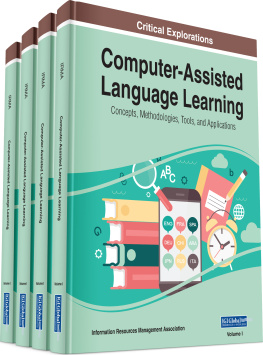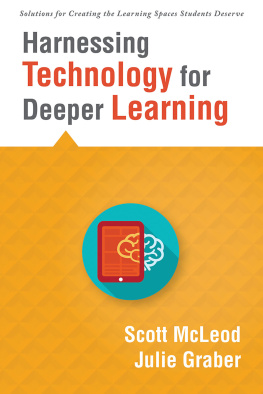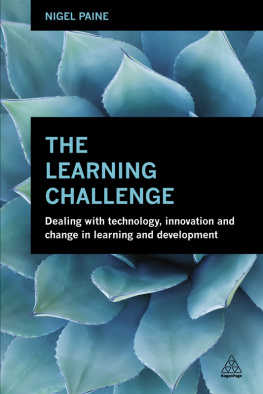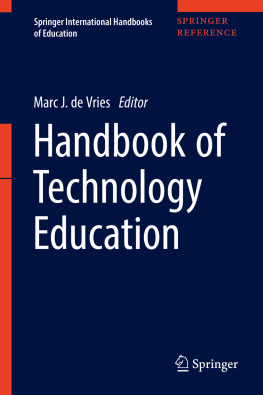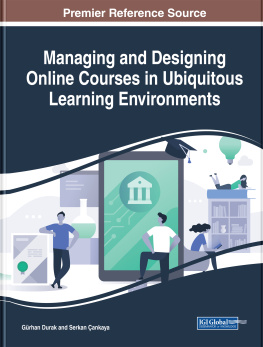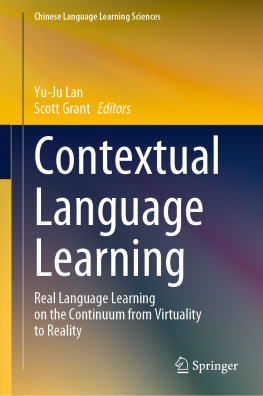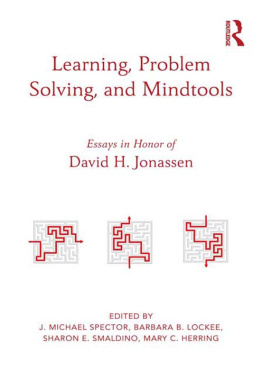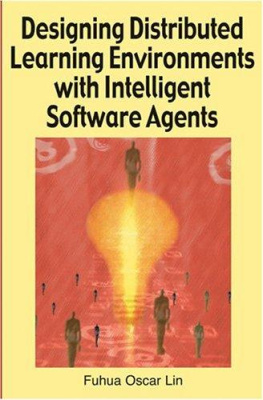Cover
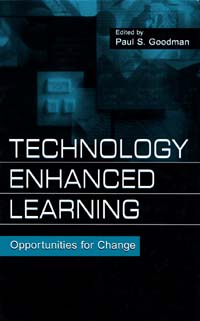
| title | : | Technology Enhanced Learning : Opportunities for Change |
| author | : | Goodman, Paul S. |
| publisher | : | Lawrence Erlbaum Associates, Inc. |
| isbn10 | asin | : | 0805836659 |
| print isbn13 | : | 9780805836653 |
| ebook isbn13 | : | 9780585386256 |
| language | : | English |
| subject | Education, Higher--Effect of technological innovations on, Educational technology, Information technology, Distance education, Computer-assisted instruction. |
| publication date | : | 2001 |
| lcc | : | LB1028.3.T39685 2001eb |
| ddc | : | 378.1/734 |
| subject | : | Education, Higher--Effect of technological innovations on, Educational technology, Information technology, Distance education, Computer-assisted instruction. |
Page i
Technology Enhanced Learning
Opportunities for Change
Page ii
This page intentionally left blank
Page iii
Technology Enhanced Learning
Opportunities for Changed
Edited by
Paul S. Goodman
Carnegie Mellon University

Page iv
Copyright 2001 by Lawrence Erlbaum Associates, Inc.
All rights reserved. No part of this book may be reproduced in any form, by photostat, microfilm, retrieval system, or any other means, without prior written permission of the publisher.
Lawrence Erlbaum Associates, Inc., Publishers
10 Industrial Avenue
Mahwah, NJ 07430
| Cover design by Kathryn Houghtaling Lacey |
Library of Congress Cataloging-in-Publication Data
Technology enhanced learning : opportunities for change /
edited by Paul S. Goodman
p. cm.
Includes bibliographical references and index.
ISBN 0-8058-3665-9 (cloth : alk. paper)
ISBN 0-8058-3666-7 (pbk. : alk. paper)
1. Education, HigherEffect of technological innovations on.
2. Educational technology. 3. Information technology. 4. Distance
education. 5. Computer-assisted instruction. I. Goodman, Paul S.
| LB1028.3 .T39685 2002 |
| 378.1'734dc21 | 2001033063 |
| CIP |
Books published by Lawrence Erlbaum Associates are printed on acid-free
paper, and their bindings are chosen for strength and durability.
Printed in the United States of America
10 9 8 7 6 5 4 3 2 1
Page v
To Richard M. Cyert
a leader in higher education who thought strategically, saw opportunities that others did not, and persisted until his visions were implemented.
Page vi
This page intentionally left blank
Page vii
Contents
Contributors by Chapter | xi |
Preface | xv |
Part I: Issues |
| Technological Trends and Implications for Learning in Tertiary Institutions Raj Reddy and Paul S. Goodman | |
FIG. 1.1. | Exponential Growth Trends in Computer Performance |
FIG. 1.2. | Power |
FIG. 1.3. | Memory |
FIG. 1.4. | Price |
FIG. 1.5 | Components per Chip |
| Edu-Tech: What's a President to do? Richard C. Larson and Glenn P. Strehle | |
FIG. 2.1. | Cave Drawings that are 30,000 Years Old (The ChauvetPontd'Arc Cave) |
FIG. 2.2. | Stage Coaches Attached to Steam Engine (Mohawk and Hudson's De Witt Clinton, 1987) |
Page viii
3Cooperation Between Educational Technology and Learning Theory to Advance Higher EducationHerbert A. Simon61 4The Art and Science of IT InfrastructureJos-Marie Griffiths and Alan McCord75 FIG. 4.1Michigan Model of Information Technology Services 81 5The Disquieting Dilemmas of Digital LibrariesSara Lou Whildin, Susan Ware, and Gloriana St. Clair123 6Creating Organizational and Technological ChangePaul S. Goodman153 Table 6.1.Framing Organizational Change 158 Table 6.2.Summary of Change Process 166 FIG. 6.1.Learning Environments by Space and Time 160 FIG. 6.2.Forms of Knowledge Conversions 161 FIG. 6.3.Forms of Change 164 FIG. 6.4.A Sociotechnical System 168 Part II: Applications 7The Virtual University: Customized Education in a NutshellCarlos Cruz Limon183 Table 7.1.Ten Lessons Learned from the Virtual University 189 AppendixProduct Lines of the Virtual University 200 8The FAST Program: A Computer-based Training EnvironmentSanjay Srivastava203
Page ix
Table 8.1.Basic Dimensions of FAST Components 209 Table 8.2.Learning Features in the FAST Environment 215 FIG. 8.1.Sample Bond Tutor Calculations 214 FIG. 8.2.The Simulated Market 215 Appendix A: Summary of Trading Case B04219 FIG. A8.1.Cash Flows from Securities 219 FIG. A8.2.Sample Trading Screen 215 Appendix B: Trading Case RE1221 FIG. B8.1.Independent Events and Paid DividendsPeriod 1 222 FIG. B8.2.Details of Case RE1 222 FIG. B8.3.Sample Trading Screen 223 Appendix C: Sample Tutorial224 FIG. C8.1.Excel Spreadsheet 224 FIG. C8.2.CAPM Tutor Contents Screen 224 FIG. C8.3.Historical Data Module Interface 225 FIG. C8.4.Historical Data Module Interface 226 FIG. C8.5.Sample Historical Data 227 FIG. C8.6.Excel Data Link Example 228 FIG. C8.7.CAPM Tutor Data Analysis Interface 229 FIG. C8.8.CAPM Tutor Display: Portfolio Return Histogram 230 FIG. C8.9.CAPM Tutor Display: Volatility Analysis 231 FIG. C8.10.CAPM Tutor: Contents Menu 232 FIG. C8.11.CAPM Tutor Display: Efficient Portfolios 233 FIG. C8.12.CAPM Tutor Display: Portfolio Selection 233 FIG. C8.13.CAPM Tutor Display: Portfolio Selection 234 9Cognitive Tutors: From the Research Classroom to All ClassroomsAlbert T. Corbett, Kenneth Koedinger, and William S. Hadley235
Page x
Table 9.1.Year-End Assessments of Cognitive TutorAlgebra I 250 FIG. 9.1.The Algebra I Cognitive Tutor Screen Near the End of a Problem 238 FIG. 9.2.Example Student-Tutor Interactions 240 FIG. 9.3.Average Lisp Programming Problem Completion Times Across Five Lessons for Student Using the Lisp Tutor and Students Working in a Conventional Programming Environment 243 FIG. 9.4.Impact of Cognitive Tutor Technology on the Classroom 244 FIG. 9.5.The ANGLE Geometry Tutor 245 FIG. 9.6.Algebra I Final Exam Question 248 FIG. 9.7.Dissemination of the Cognitive Tutor Algebra I Course 252 FIG. 9.8.Excerpts from Letters Describing the Cognitive Tutor Algebra I Classroom 259 10The Development of the Studio ClassroomJack M. Wilson265 Table 10.1.Some Features of the Studio and Traditional Courses 279 11Concluding ThoughtsPaul S. Goodman289 Author Index295 Subject Index299
Page xi
Contributors by Chapter
| Dr. Raj Reddy
University Professor
Carnegie Mellon University
Computer Science Department
|
Next page

